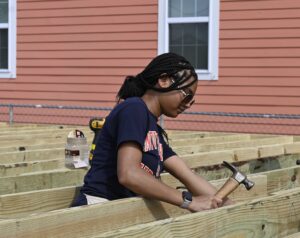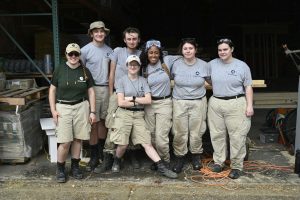“”As we consider the enormous loss endured by the people of our community, we are motivated by both that memory of grief and by the resilience evident in the support given to us by our friends and partners these last nine years to continue our commitment to rebuilding and revitalizing New Orleans.”.” Jim Pate, NOAHH Executive Director

In the nine years since Hurricane Katrina, NOAHH has gone from gutting houses when there was no infrastructure to being the largest homebuilder in the state to being an organization with a wide range of programs designed to meet the needs of a community in transition. This journey has been at times chaotic and at times routine, but always with a focus on our mission. By now it has become a familiar refrain to say that the storm changed everything. Today, we’d like to take a moment to reflect on how it changed everything.
Before the storm, our affiliate built about 10 homes per year. The ReStore was newly opened on Press Street, and there were no other programs besides our primary homebuilding. The New Orleans affiliate was a small one that had ambitions to do much more in a city affected already by blight and poverty, and a promise from Baptist Crossroads to build 20 homes was just the start of that process. In summer 2005, NOAHH was poised to begin a new phase of their work, seeking to grow to meet the needs of the community.
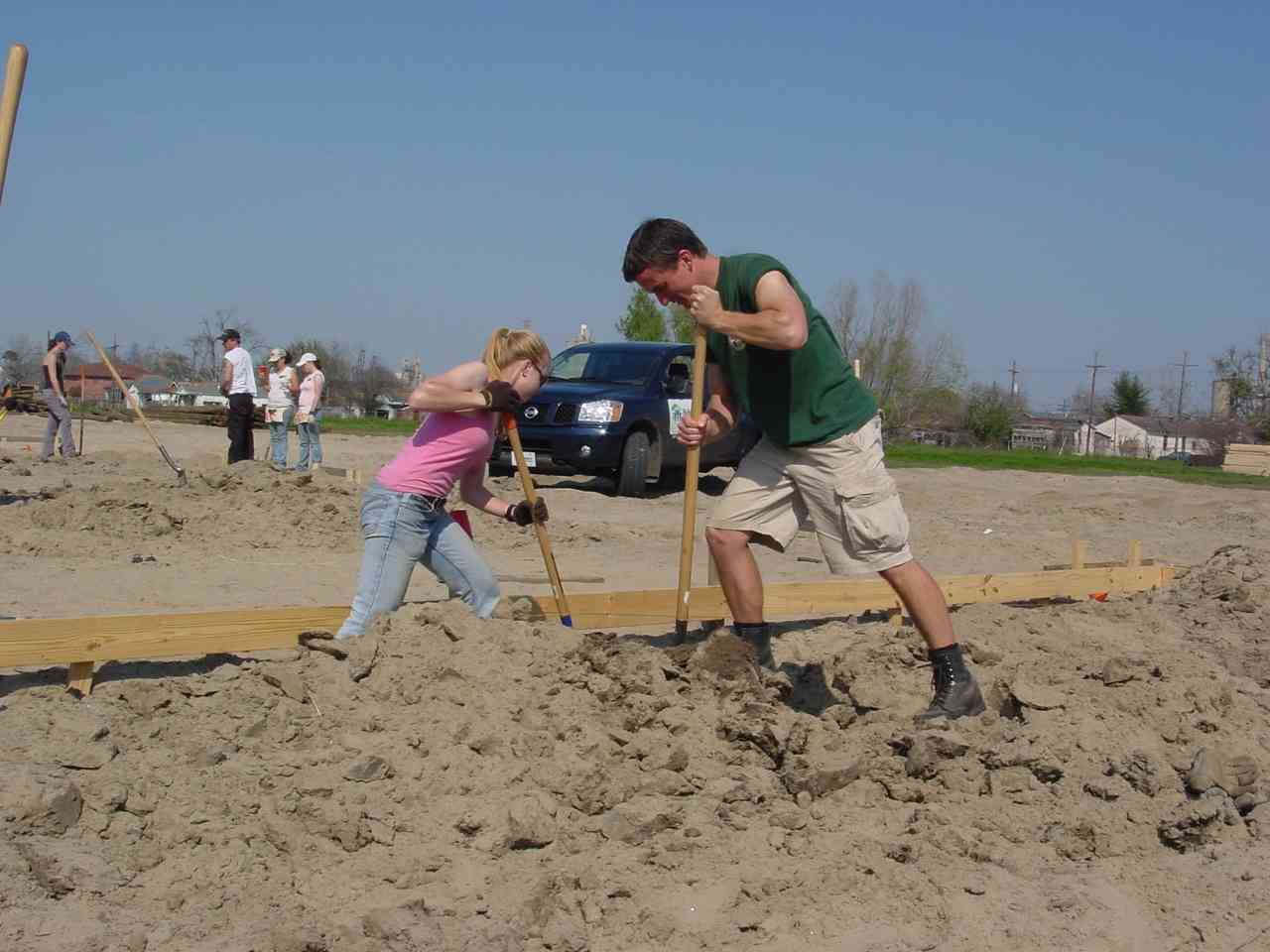
The storm hit on August 29, 2005, and the damage done to the Gulf Coast was measured in thousands of lives, hundreds of thousands of homes, and billions of dollars. Almost all of New Orleans was flooded after the levees failed, and the surrounding parishes all suffered similar damage. The biographies of our partner families from after this time are full of tales of courage, perseverance, and inspiring determination in the face of unfathomable hardship, and many of you reading this have your own stories to tell. Below is the story, in brief, of NOAHH’s response to the storm and beyond, but we would welcome hearing from you as well.
Twelve days after the storm hit, executive director Jim Pate returned after a brief evacuation to assay the state of the city and the affiliate. A handful of AmeriCorps and staff returned not long after, and as the world’s focus was turned to the city, donations and volunteers started pouring in. At first, there was no infrastructure for homebuilding, so the affiliate began gutting homes. Before the end of the year, 2,400 severely damaged homes were gutted and construction had begun on the first new homes since the storm. Key support from the New Orleans Hornets, Texas Roadhouse, and Baptist Crossroads made these first new homes possible, and soon, even bigger plans took shape.
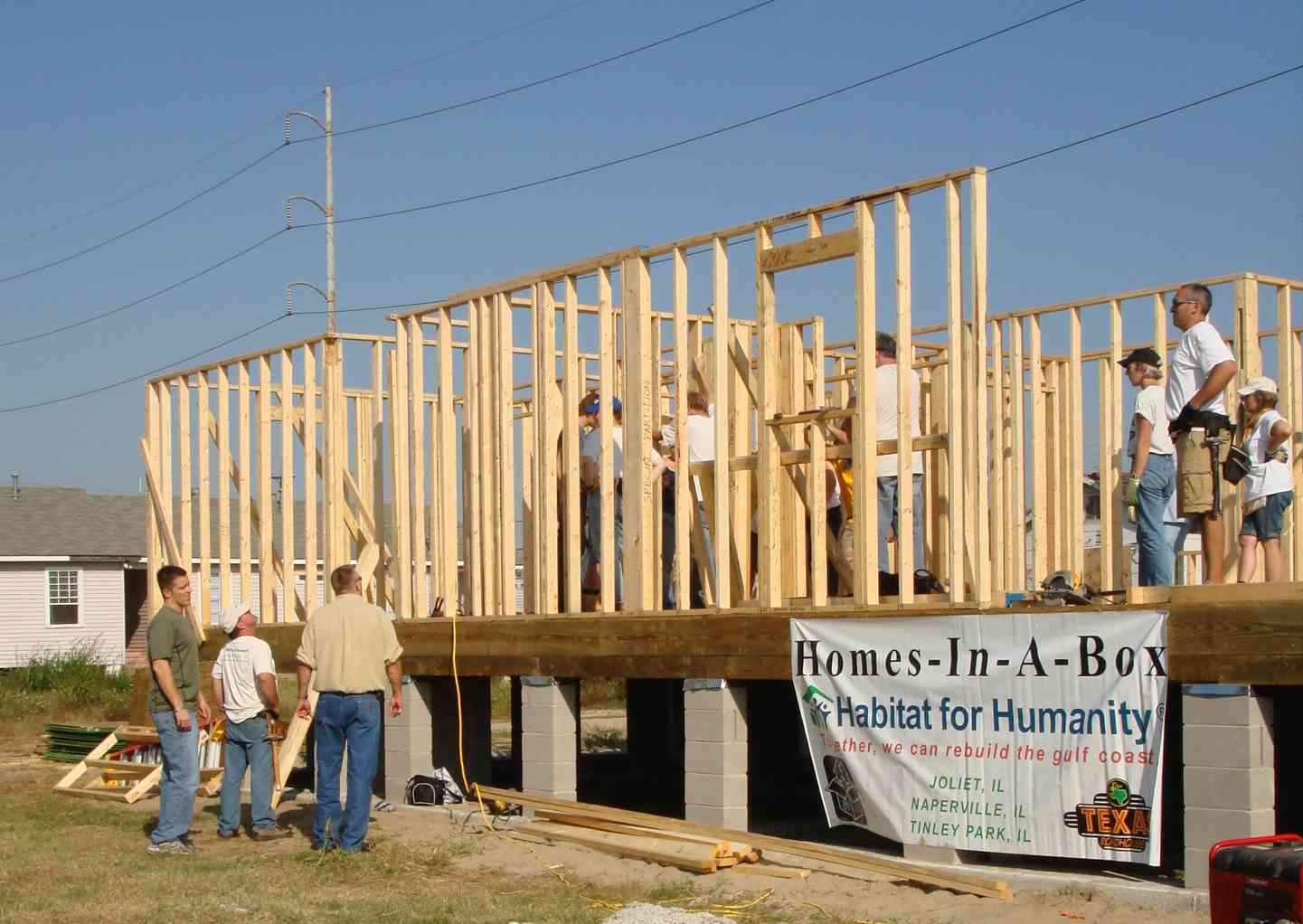
Two major programs were critical in the early stages of recovery: Operation Home Delivery (OHD) and Musicians’ Village.
OHD began a week after the storm, devised by Habitat for Humanity International to facilitate families’ return to the Gulf Coast. Homes were pre-built in locations around the country then shipped to affected affiliates, expediting the build process and getting around local obstacles, like lack of infrastructure. A significant number of homes, especially those sponsored by Texas Roadhouse, came to NOAHH through this program. Continuing for several years after the storm, it created a stable base of home construction upon which NOAHH built its efforts.

Musicians’ Village became the center of the rebirth of the Upper Ninth Ward. Devised by Jim Pate, Harry Connick, Jr., and Branford Marsalis, Musicians’ Village was designed to give a home not just to musicians, but to the musical heritage of New Orleans. By summer 2006, the first homes in Musicians’ Village were being dedicated, and though it would take many years to complete, the 72-home and 10-elder-friendly duplex tract would remain a symbol of hope amid the destruction and blight around it. As the Village grew, its presence inspired others to return. At its heart is the Ellis Marsalis Center for Music (EMCM), named for the jazz legend and father of the Marsalis musical family, as well as a teacher to hundreds (if not thousands) of New Orleans musicians (including Harry Connick, Jr.), which officially opened in 2011.
That year saw many small steps on the road to recovery. By March 2006, the first home dedication after the storm took place, a home on Delachaise, sponsored by the New Orleans Hornets through the Hoops for Homes program. Major support would soon come pouring in, with donations like the $1.5 million matching grant from Dave Matthews Band, and $1 million from Nonesuch Records. That summer, Camp Hope, I was established in a flood-damaged St. Bernard Parish middle school and provided up to 450 volunteers with a safe, affordable place to stay while they helped rebuild. A few months later, NOAHH refurbished a larger St. Bernard high school into a volunteer housing facility with a volunteer capacity of over 850 volunteers per night. RHINO, a local volunteer coordination organization, had established itself as one of the largest sources of volunteers that would partner with NOAHH. By fall, the rebuilding efforts attracted the attention of many public figures, including President George W. Bush, President Jimmy Carter, then-Senator Barack Obama, then-Lieutenant Governor Mitch Landrieu, Catholicos of All Armenia Karekin II, and Crown Prince of Norway Haakon Magnus.
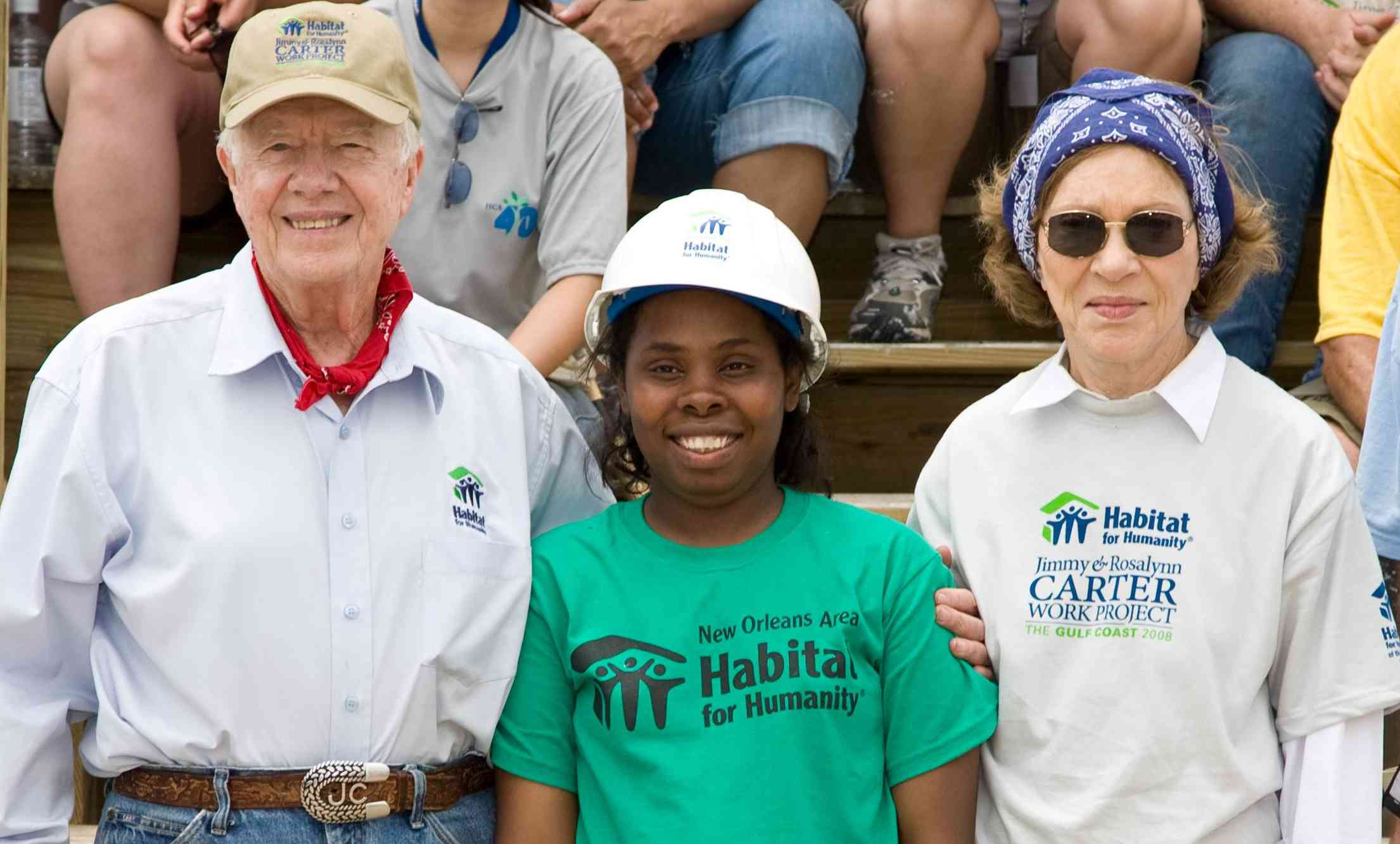
By 2007, over 100 homes were completed by NOAHH. By 2008, over half of Musicians’ Village was complete, and President Carter returned for the third time since the storm with the Jimmy and Rosalynn Carter Work Project, bringing thousands of volunteers to the Gulf Coast. Earlier in the year, the NBA returned for a Day of Service that accompanied the 2008 All-Star Game in the city, and Hurricane Gustav once more brought damage to the region. By 2009, almost all of Musicians’ Village had been completed, and Camp Hope transferred to management by St. Bernard Parish. By the time of the 5th anniversary in 2010, which saw a topping off ceremony for the EMCM and a 5-day, 5-home blitz build in the Seventh Ward, NOAHH had completed over 350 homes. (Oh, and the Saints won a Super Bowl.)

Though Hurricane Isaac brought more challenges to the region, the city continued to recover. By 2012, NOAHH’s efforts had netted over $300 million in economic impact, creating over 3,000 jobs, serving over 3,000 families, and leading over 100,000 volunteers. Those numbers have only continued to grow, but as the area has stabilized, NOAHH has begun to diversify our programs. In 2012, NOAHH started the HUG Initiative, held the first Attack the Block events, and initiated our ABWK program. In the past two years, our affiliate has moved to new premises, completed our 500th home since 1983 (over 400 since Hurricane Katrina), begun the Habitat Young Professionals program, and celebrated our 30th year. During this time, the affiliate has shifted from the fast-paced building that came as an immediate response to the storm and steadied into a more sustainable model that allows us to focus on all aspects of poverty housing in the New Orleans area.
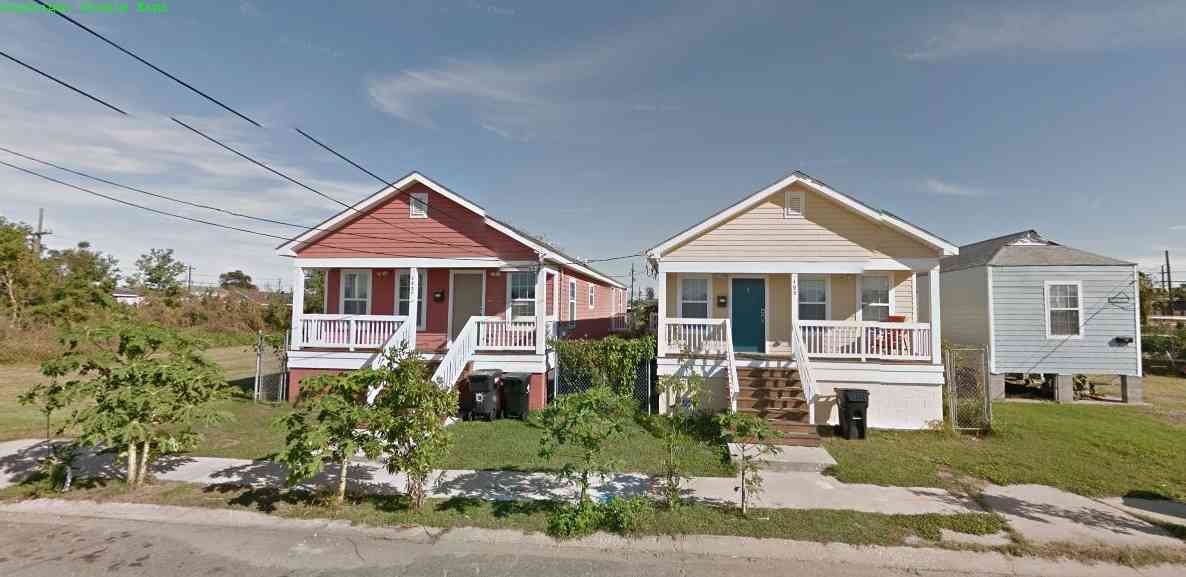
In the coming year, the tenth since Hurricane Katrina, NOAHH will begin to pay recognition to the efforts since the storm not just of our affiliate, but of all New Orleanians and our supporters. We will also continue our 30 year commitment to the area by maintaining our many new programs and further expanding our impact. As we look back and consider where we’ve been and how we will go forward, we would welcome any thoughts, ideas, and other feedback from those of you who have helped us get to where we are. If you have been a part of the rebuilding efforts, if you have lent us support, if you have advocated for us to friends and neighbors, if you have been a part of our family, we invite you to share your stories and your ideas here.
In the past nine years, we have built over 400 homes, completed over 60 ABWK projects, over 200 rehabs and remediations, cultivated over 40 urban gardens, cleared dozens of lots and tons of trash, and more; but we know it will take much more than that to achieve our goal of making safe, affordable housing a reality for everyone in New Orleans.”
